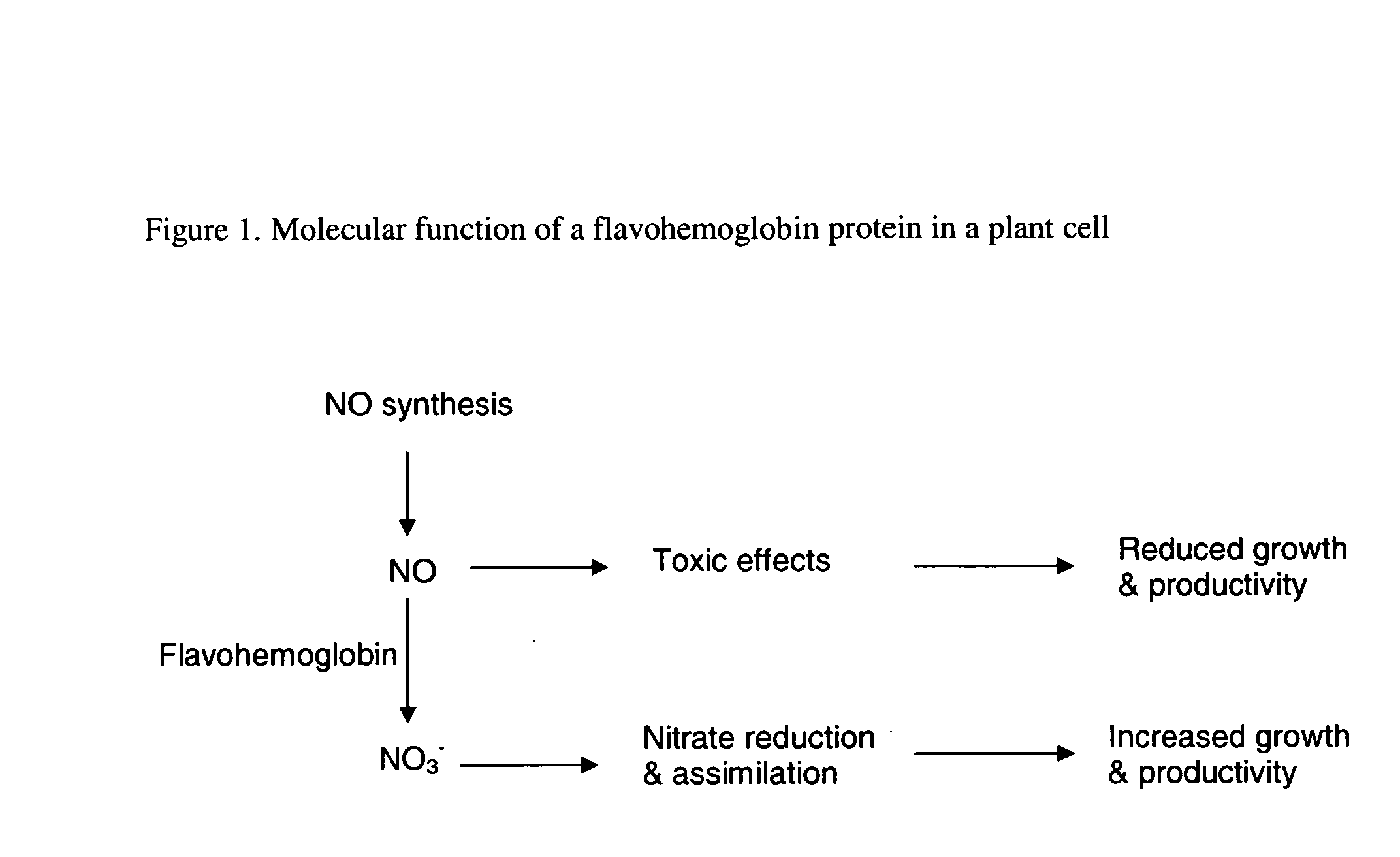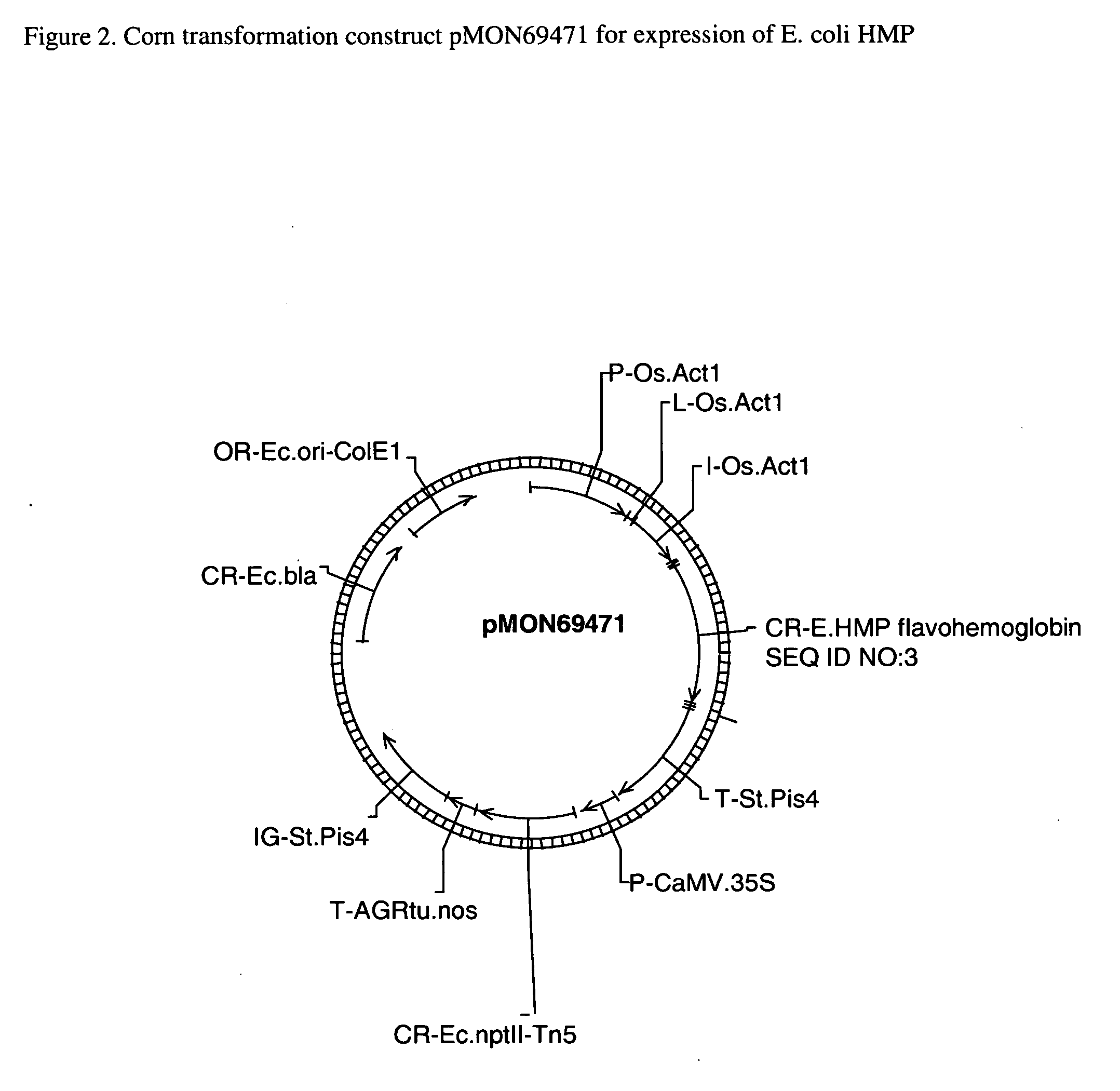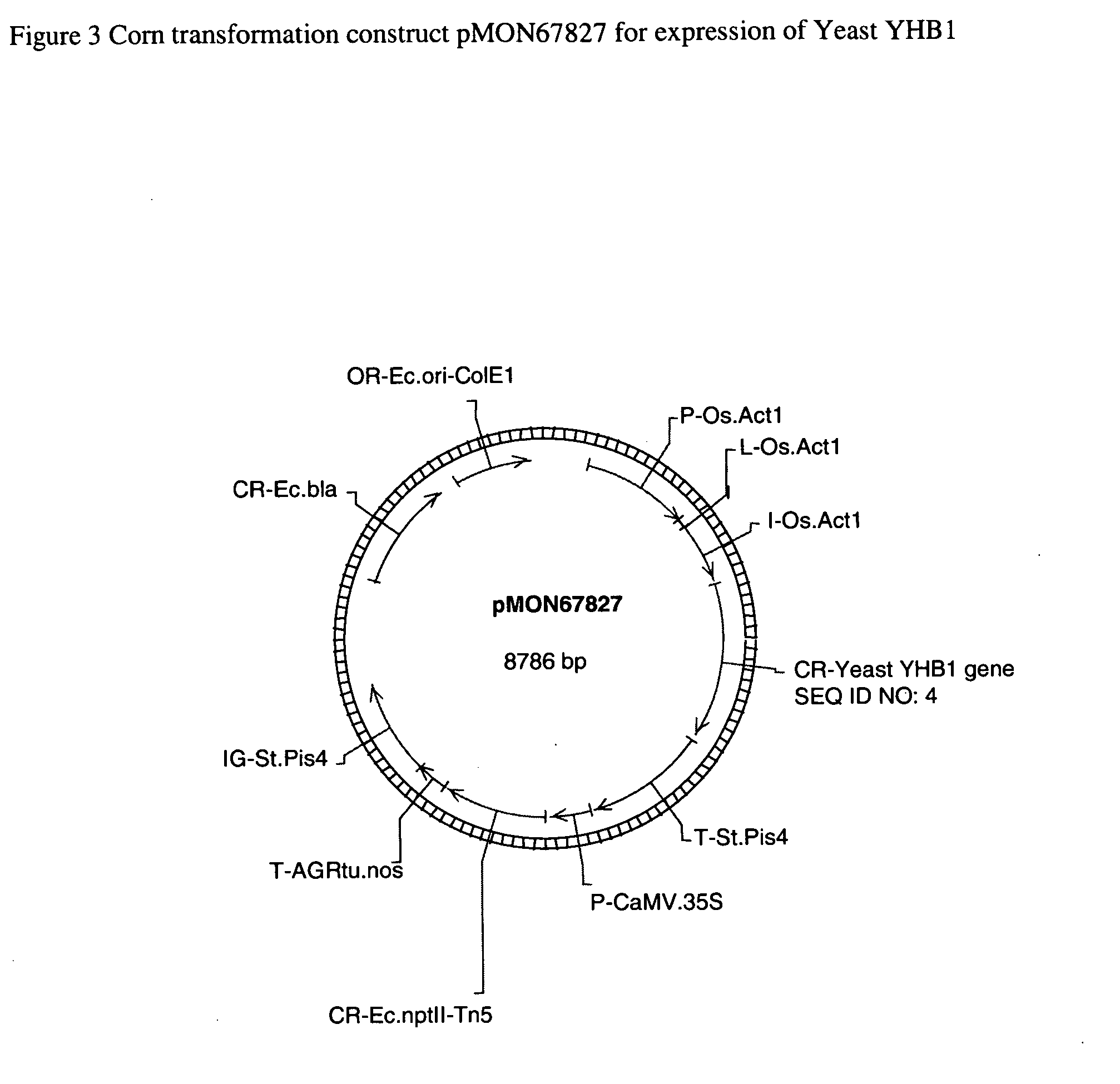Plants containing a heterologous flavohemoglobin gene and methods of use thereof
a technology of flavohemoglobin and plant genes, applied in the field of plant genetics and developmental biology, can solve the problems of limiting the growth and productivity of plants with nitrogen, and the selection strategy has been largely unsuccessful, so as to improve the agronomic traits, and improve the quality of li
- Summary
- Abstract
- Description
- Claims
- Application Information
AI Technical Summary
Benefits of technology
Problems solved by technology
Method used
Image
Examples
example 1
Construct for Plant Transformation
A. Corn Transformation Constructs
[0088] GATEWAY™ destination vectors (available from Invitrogen Life Technologies, Carlsbad, Calif.) can be constructed for each DNA molecule disclosed herein for corn transformation. The elements of each destination vector are summarized in Table 2 below and include a selectable marker transcription region and a DNA insertion transcription region. The selectable marker transcription region comprises a Cauliflower Mosaic Virus 35S promoter operably linked to a gene encoding neomycin phosphotransferase II (nptII) followed by both the 3′ region of the Agrobacterium tumefaciens nopaline synthase gene (nos) and the 3′ region of the potato proteinase inhibitor II (pinII) gene. The DNA insertion transcription region comprises a rice actin 1 promoter, a rice actin 1 exon 1 intron1 enhancer, an att-flanked insertion site and the 3′ region of the potato pinII gene. Following standard procedures provided by Invitrogen the at...
example 2
Characterization of Transgene Expression
[0101] The constructs, pMON69471 was constructed with a sequence derived from the 3′ region of the potato pinII gene, which could be used to assay the relative level of transgene expression. The total RNA was extracted from the tissue lysates by regular methods known in the art and the extracted mRNA was analyzed by Taqman® with probes specific to the potato protease inhibitor (PINII) terminator. Values represent the mean from four individual plants.
[0102] The primers for PINII terminator amplification are the followings: PinII F-4 (forward primer) GATGCACACATAGTGACATGCTAATCAC (SEQ ID NO: 267), PinII Probe 4 ATTACACATAACACACAACTTTGATGCCCACAT (SEQ ID NO: 268), PinII R-4 (reverse primer) GGATGATCTCTTTCTCTTATTCAGATAATTAG (SEQ ID NO: 269). Within each PCR reaction, a standard RNA 18S rRNA amplification was used as an internal control. The primers for 18S rRNA amplification are the followings: the forward primer CGTCCCTGCCCTTTGTACAC (SEQ ID NO: 2...
example 3
Characterization of Physiological Phenotypes of Transgenic Plants Expressing a Heterologous Flavohemoglobin Protein
[0103] The physiological efficacy of transgenic corn plants (tested as hybrids) can be tested for nitrogen use efficiency (NUE) traits in a high-throughput nitrogen (N) screen. The collected data are compared to the measurements from wildtype controls using a statistical model to determine if the changes are due to the transgene. Raw data were analyzed by SAS software. Results shown herein are the comparison of transgenic plants relative to the wildtype controls.
(1) Media Preparation for Planting a NUE Protocol
[0104] Planting materials used: Metro Mix 200 (vendor: Hummert) Cat. # 10-0325, Scotts Micro Max Nutrients (vendor: Hummert) Cat. # 07-6330, OS 4⅓″×3⅞″ pots (vendor: Hummert) Cat. # 16-1415, OS trays (vendor: Hummert) Cat. # 16-1515, Hoagland's macronutrients solution, Plastic 5″ stakes (vendor: Hummert) yellow Cat. # 49-1569, white Cat. # 49-1505, Labels with...
PUM
| Property | Measurement | Unit |
|---|---|---|
| pH | aaaaa | aaaaa |
| length | aaaaa | aaaaa |
| weight | aaaaa | aaaaa |
Abstract
Description
Claims
Application Information
 Login to View More
Login to View More - R&D
- Intellectual Property
- Life Sciences
- Materials
- Tech Scout
- Unparalleled Data Quality
- Higher Quality Content
- 60% Fewer Hallucinations
Browse by: Latest US Patents, China's latest patents, Technical Efficacy Thesaurus, Application Domain, Technology Topic, Popular Technical Reports.
© 2025 PatSnap. All rights reserved.Legal|Privacy policy|Modern Slavery Act Transparency Statement|Sitemap|About US| Contact US: help@patsnap.com



